Introduction
Dieffenbachia is a stunning tropical plant that has become a popular choice for indoor gardeners. With its lush foliage and air-purifying properties, it’s easy to see why this plant has become a favorite amongst plant enthusiasts. However, caring for Dieffenbachia can be a bit tricky, especially if you’re new to the world of houseplants. In this article, we’ll provide you with a comprehensive guide on how to care for and maintain your Dieffenbachia plant. From lighting and watering to soil and pruning, we’ll cover everything you need to know to keep your plant healthy and thriving. So, whether you’re a seasoned plant parent or a beginner, read on to learn more about the care and maintenance of Dieffenbachia.
Light Requirements
Dieffenbachia plants thrive in bright, indirect light. Placing your plant near a window that receives filtered sunlight is ideal. However, direct sunlight can damage the leaves of the plant, so it’s important to avoid placing it in direct sunlight.
If you notice that your Dieffenbachia isn’t growing as well as you’d like, it may be due to insufficient lighting. In this case, you can try moving your plant to a brighter location or supplementing its light with artificial lighting.
On the other hand, if your plant is receiving too much light, you may notice that the leaves are turning yellow or brown. This is a sign of sunburn, and you should move your plant to a shadier location immediately.
It’s important to remember that Dieffenbachia plants are sensitive to changes in lighting. If you need to move your plant to a different location, do so gradually, over the course of a few days, to avoid shocking the plant. With proper lighting, your Dieffenbachia plant will grow strong and healthy, adding a touch of tropical beauty to your indoor space.
Watering and Humidity for Dieffenbachia
Proper watering is essential for the health of your Dieffenbachia plant. Overwatering can lead to root rot, while underwatering can cause the leaves to wilt and turn brown. To avoid these issues, you should water your plant when the top inch of soil feels dry to the touch.
When watering, make sure to saturate the soil thoroughly, but avoid letting the plant sit in standing water. It’s also important to use a well-draining potting mix to prevent water from accumulating in the soil.
In addition to proper watering, Dieffenbachia plants require a humid environment. These tropical plants thrive in high humidity, so it’s important to keep the air around them moist. You can increase humidity by misting the leaves with water or placing a humidifier near the plant.
If the air in your home is particularly dry, you may notice that the tips of the leaves are turning brown. This is a sign that the air is too dry, and you should increase the humidity around your plant immediately.
By providing your Dieffenbachia plant with proper watering and humidity, you can ensure that it stays healthy and vibrant for years to come.
Soil and Fertilizer
Choosing the right soil is crucial for the health of your Dieffenbachia plant. These plants require a well-draining potting mix that retains moisture without becoming waterlogged. You can create your own potting mix by combining equal parts of peat moss, perlite, and vermiculite.
In addition to proper soil, Dieffenbachia plants require regular fertilization to thrive. During the growing season, which typically runs from spring to fall, you should fertilize your plant every two weeks with a balanced, water-soluble fertilizer.
It’s important not to over-fertilize your plant, as this can lead to salt buildup in the soil and damage the roots. Always follow the instructions on the fertilizer package and dilute the fertilizer to half strength before applying it to your plant.
If you notice that your plant is growing slowly or the leaves are turning yellow, it may be a sign that it needs more fertilizer. On the other hand, if the leaves are turning brown or the tips are curling, it may be a sign of over-fertilization.
Pruning and Propagation for Dieffenbachia
Pruning your Dieffenbachia plant is important for maintaining its shape and promoting healthy growth. You should prune your plant in the spring, just before the growing season begins.
To prune your plant, use a sharp, clean pair of scissors or pruning shears to cut back any yellow or brown leaves, as well as any stems that have become too long or leggy. You can also trim the tips of the stems to encourage bushier growth.
Propagation is another way to maintain your Dieffenbachia plant and create new ones. The easiest way to propagate your plant is through stem cuttings. To do this, simply cut a stem from the parent plant, making sure it has at least one node, or a small bump where the leaves grow.
Place the stem cutting in a jar of water, making sure that the node is submerged. After a few weeks, roots should begin to grow from the node. Once the roots are at least an inch long, you can transplant the cutting into a pot with well-draining potting mix.
Propagation can be a fun and rewarding way to expand your collection of Dieffenbachia plants. By pruning and propagating your plant, you can ensure that it stays healthy and vibrant for years to come.
Common Pests and Diseases
Like all plants, Dieffenbachia plants are susceptible to pests and diseases. However, with proper care and attention, you can prevent and treat these issues.
Pests
Some common pests that can infest Dieffenbachia plants include spider mites, mealybugs, and scale insects. These pests can cause damage to the leaves, including yellowing, wilting, and stunted growth.
To prevent and treat pest infestations, inspect your plant regularly and remove any affected leaves or stems. You can also wipe the leaves with a damp cloth or spray them with an insecticidal soap to kill the pests.
Diseases of Dieffenbachia
Dieffenbachia plants can also be affected by diseases such as root rot, bacterial leaf spot, and powdery mildew. These diseases can cause discoloration and wilting of the leaves, as well as stunted growth.
To prevent and treat diseases, make sure to water your plant properly and avoid over-fertilizing. If you notice any signs of disease, remove the affected leaves or stems and treat the plant with a fungicide.
It’s important to remember that prevention is key when it comes to pests and diseases. By providing your Dieffenbachia plant with proper care, including adequate lighting, watering, and humidity, you can help prevent these issues from occurring in the first place.
In conclusion, with proper care and attention, you can keep your Dieffenbachia plant healthy and free from pests and diseases. Regular inspection and treatment can help prevent and treat any issues that may arise, ensuring that your plant continues to thrive for years to come.
Types of Dieffenbachia Plants
There are many different types of Dieffenbachia plants, each with its unique characteristics and appearance. Some of the most popular Dieffenbachia varieties include:

‘Camille’: This variety has broad leaves with a lime-colored center and dark green edges. It thrives in full to partial shade in well-drained soil.

‘Tropic Snow’: This cultivar has white and green variegated leaves and prefers bright.

‘Exotica’: This variety has dark green leaves with white spots and prefers bright.

‘Compacta’: This cultivar has shorter stems and leaves and prefers bright.
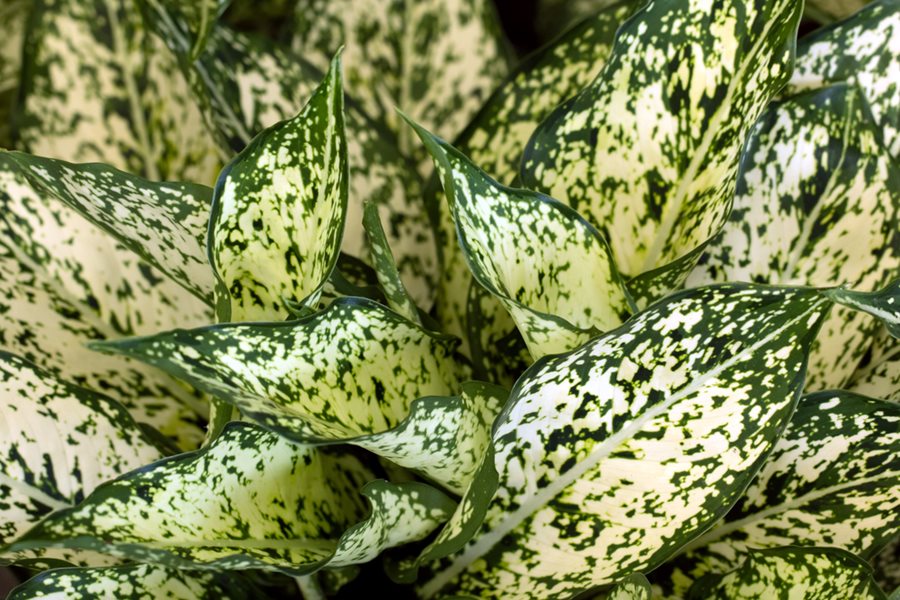
‘Star Bright’: This variety has green leaves with yellow spots and prefers bright.
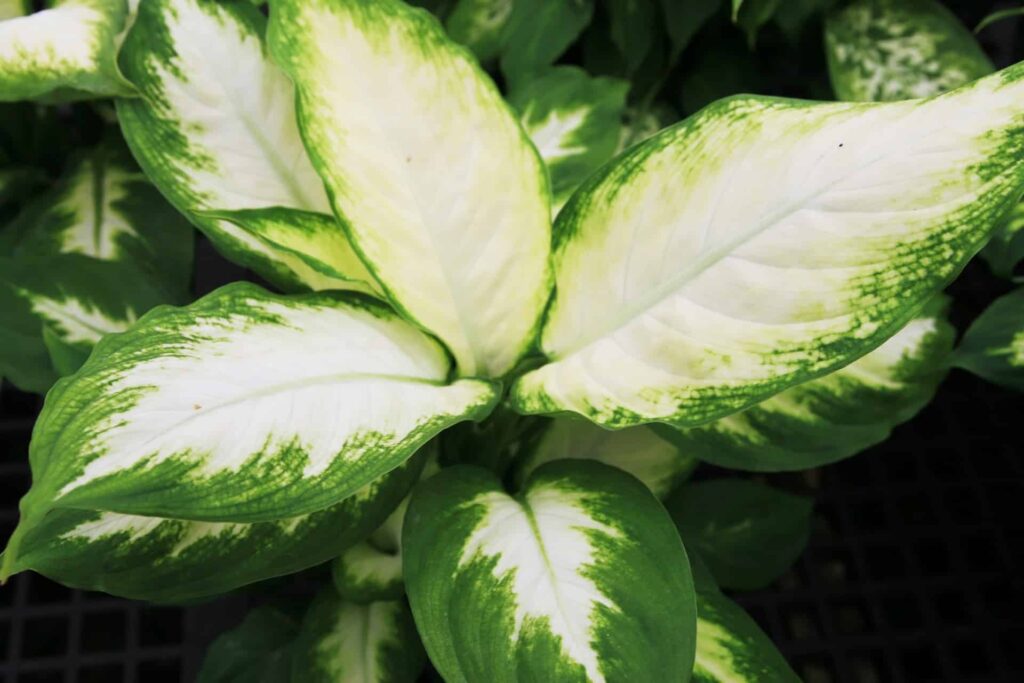
‘Honeydew’: This cultivar has green and yellow variegated leaves and prefers bright.

‘Sparkles’: This variety has green leaves with white spots and prefers bright.
Conclusion
In conclusion, taking care of a Dieffenbachia plant requires attention to its specific needs. Proper watering, humidity, soil, and fertilization are essential for the health of the plant. Pruning and propagation can help maintain its shape and create new plants. Additionally, preventing and treating pests and diseases can help keep the plant healthy and vibrant. By following these guidelines and providing your Dieffenbachia plant with the care it needs, you can enjoy its beauty for years to come.

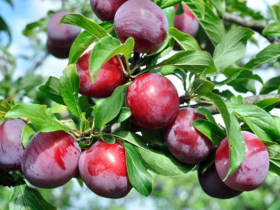


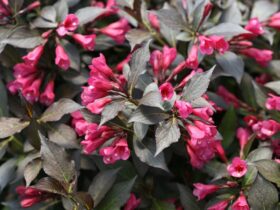
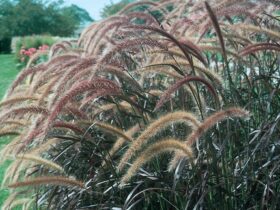
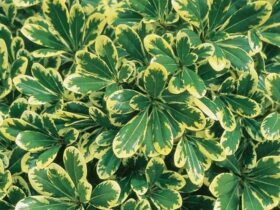




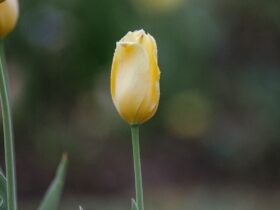
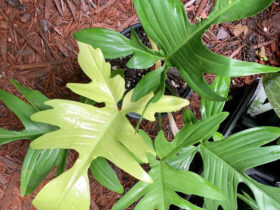
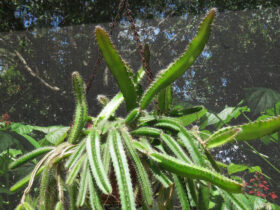
Leave a Reply